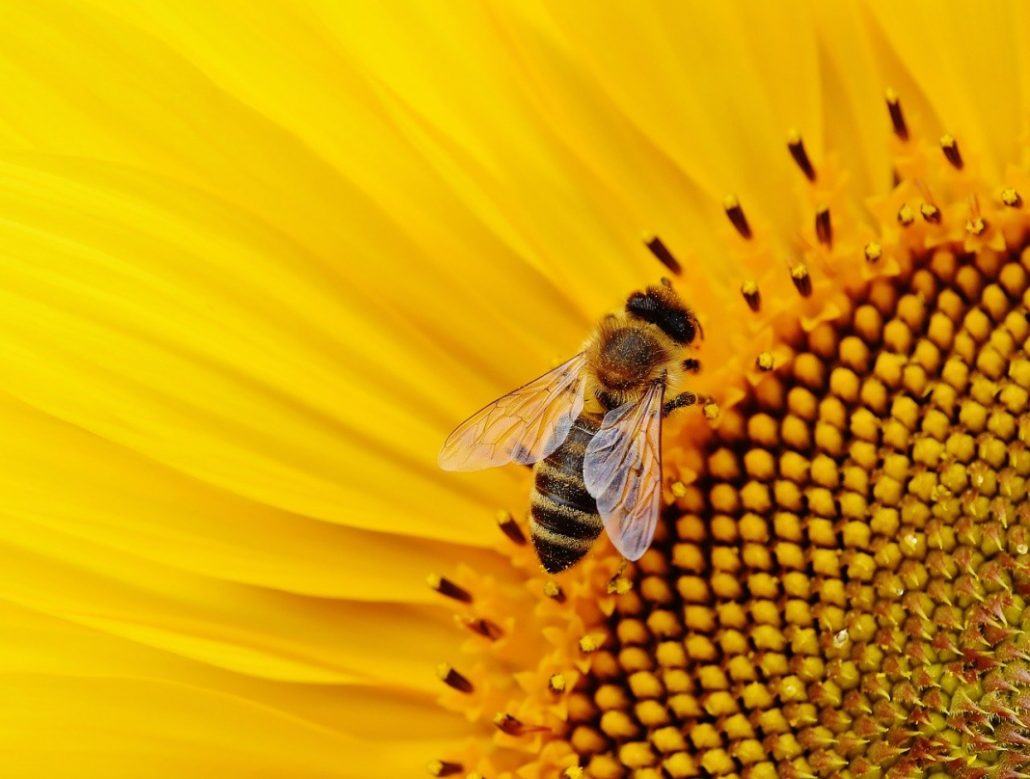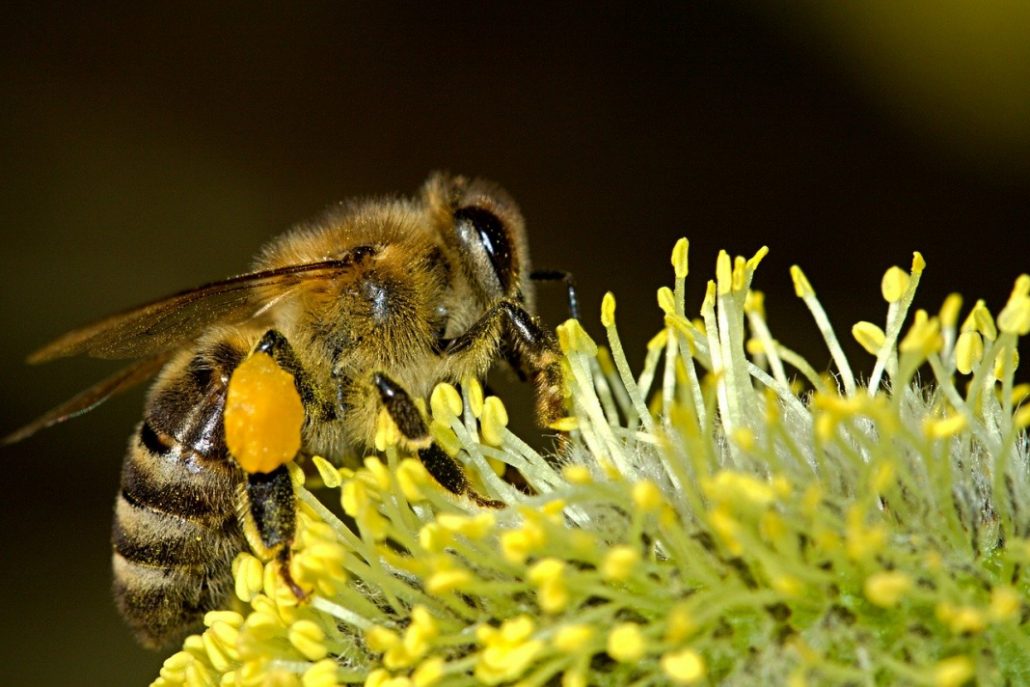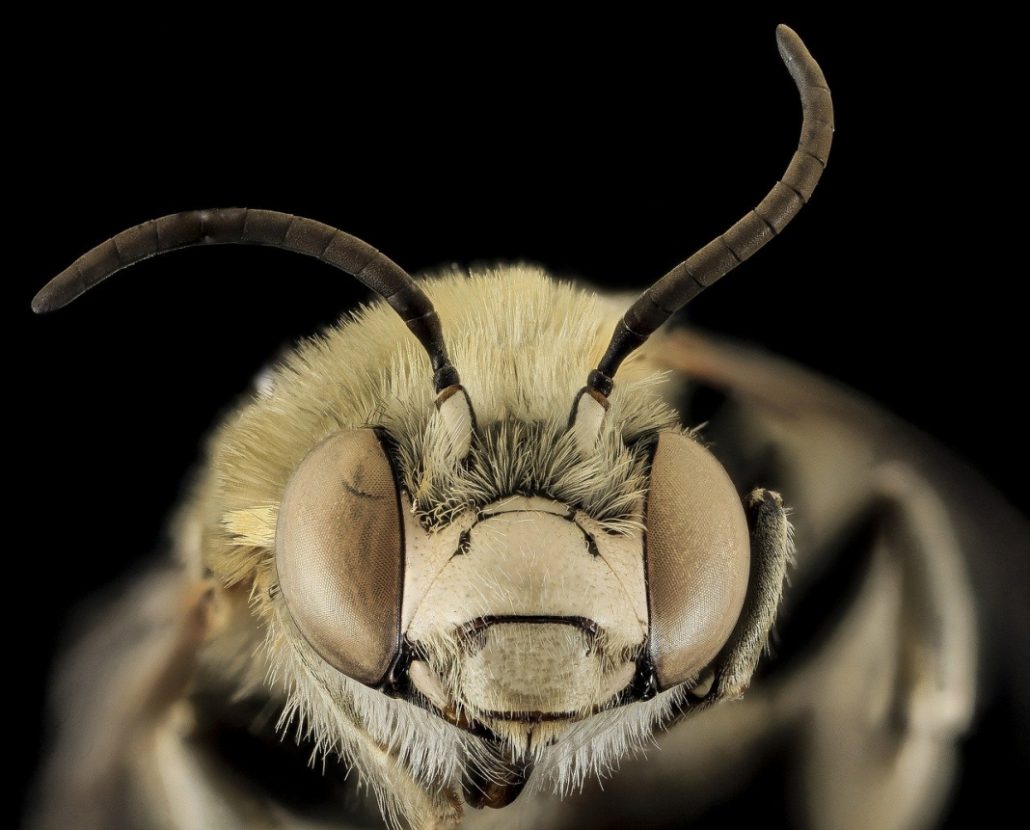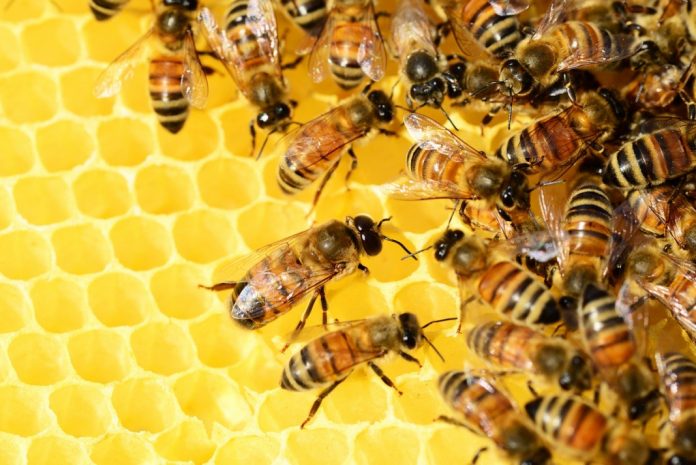Bees are one of the most fascinating and vital beings that inhabit the globe. They are social beings who live in communities and have well differentiated functions between the three hierarchies of their society.
Bees inhabit almost every continent on earth except Antarctica. It is one of the oldest insects known to have populated our planet for more than 30 million years. More than 20,000 different bee subspecies in 7 recognized families were found.
Bees are primarily pollinating insects, and hold a vital ability of function for the balance of nature, since they actively partner in the survival of many plant species that reproduce, thanks to the transport of pollen.
Among its prominent activities, major one is the production of honey, with which it feeds its queen bee. To make a 1 liter of honey, each bee involved in the manufacture travels around 180 thousand kilometers, often collect nectar of 4,500,000 flowers and this is the work of 2,500 Bees involved.
What an impressive amount of effort they put in and what massive logistics involves in the production of honey and protecting their communities, is by an organized flyby of these incredible beings.

The honey produced by bees is highly appreciated and consumed by humans in many aspects as food supplements and concerning high medical values of it. They are used against colds and various gastrointestinal processes related issues. Not only honey but also, pollen and royal jelly as a nutritional supplement. The products and beehives are highly appreciated in the terms of bee wax’s importance in health and natural cosmetics industry.
Pollination
During the tasks of its main activity, it comes into contact with the plants.
Most of bee species harvest nectar from a wide range of flowers, although there are some species that only select one type of species of plants. They are specifically have abilities to detect the ultraviolet designs of those or the aromas of certain flowers, and even electromagnetic fields of those species.
There are some species that are active at the twilight, or at night.
Bees, within the food chain, are chased by birds and spiders, are their natural predators most of the times.
In their interaction with the environment, bees carry out a fundamental work for the existence of the human race too. The Bees, evolved to possess an exclusive design of its legs for its main activity, the production of honey. They are one of the fundamental species, to make sure that all those plant species reproduce and retain in the environment without extinction.
Some of the pollen and nectar from the flowers are carried in the mouth and from its legs. The legs of a honey bee are covered with a fur that promotes pollen adhesion, and moves to one of the 4.5mm of flowers that a bee visits to extract the nectar to manufacture honey. So they intervene decisively in the reproductive process of plants, by exchanging pollen particles between flowers, which the flowers cannot do on their own.
Bees visits no more than 300 of the approximately calculated 9,000 different plants, where it visits some to collect nectar, some to collect pollen, and others to collect food.

To estimate the exquisite work of a honey bee in pollination, to get a load of nectar, a bee needs to visit between 1,000 and 1,500 flowers, being able to make an average of 10 trips a day. If we consider an average hive, during a 20-day bloom that they have visited a billion flowers. Eventually to collect a kilo of pollen, it takes approximately 60,000 trips.
Different studies carried out in France, Italy and the United States about the main crops, and the economic incidence of insects in general and of bees in particular, it has been established, considering a widely accepted value that, bees represent 85% of fauna pollination of cultivated crops. In experiments carried out by North America, it is states that the 600% of increasing in the production by the cherry plantations is achieved due to the introduction of hives in to these croplands.
Extinction dangers of bees
Unfortunately, as of almost all the degradation, the hand of man is on the top of the destruction of these species, where recent years has showed a vast degradation in its populations, in the United States it is reduced up to 30% in the last year alone. The statistics are showing figures of a brutal state that if calculated, in a few years of time this incredible honey bee could disappear from the world, which will assure the extinction of organisms, and eventually the humans.
Deforestation
The main threats that have been affects for the degradation of such a exquisite being, have been the deforestation and disturbing the areas of root structures, where honey bees are more fond of having their hives in the wild.
In most of the times, in eliminated trees the nests of the bee colonies are often found.
By excluding hectares of forests, plants that are fundamental components in the production of food for bees are also eliminates.
Every year 1% of forests disappear globally, and this represents a direct impact when in reducing the global population of bees.
Insecticides
Other critical thing is the usage of insecticides in the cultivation processes of agricultural products on a large scale, practiced by the farmers in the recent past for their easyness in production processes. These using pesticides, insecticides and weedicides, which are used to eliminate, crop damaging insects, weeds and fungi that affect crops, eventually mortally affect the bees, which is not the objective of the application, but a side effect.
Measures have being taken to some extent on the matter, and the use of some have being prohibited, but as it economically affects the agricultural industry and the forces of the industries which produce those, its total eradication has not been easy and will not eliminate until we turn fully in to nature friendly and organic agricultural practices which were practiced by our ancestors by understanding the values of those practices.
Radial signals of bees
The Bees have an incredible coordination system which uses three different navigation systems. Namely by using the sun, by the polarization of light rays and through the earth’s magnetic field they have the ability to orient themselves.

This, latter form of orientation has been severely affected by the increasing of spread of infrastructure designed for the growth of cellular telephony industries.
The electromagnetic waves that transmit through the bee habitats, causes confusion among the bees, this is also affect other organisms too like bats and insects. The bees generate electromagnetic waves to communicate with each other, and to territory marking; marking some points of their activities as a social being. When electromagnetic waves are emitted from mobile devices and other devices, bees misinterpret the signals emitted by the queen bee or other members of colony, so they become disoriented, and end up leaving their colonies and die.
The specific effects of cellular devices wave occurrence is still under study, but early observations point that it does a major impact on the bee colonies, and also the natural environments. The effect can be easily observed when comparing a populated environment and a natural environment.
Bees are an important indicator of a well-balanced healthier environment. Unfortunately, the degradation of the species have been increased in a critical level in the recent past.
With thorough aware of the importance of these incredible beings, Albert Einstein once said that “if the bees disappear from the planet, we would only have 4 years to live”
In the world bee day, 22nd of May, let’s appreciate what a major role buzzy bee plays for us over the billions of years for our existence and to keep the world in this luxurious way abundant with natural resources and its exquisite work and creativity. On this day, remembering the above saying that we need them to survive, let’s not think less of their importance and help them survive, simply doing our part protecting and conserving them, starting from promoting awareness among us and protecting and promoting their favorable environments.

























